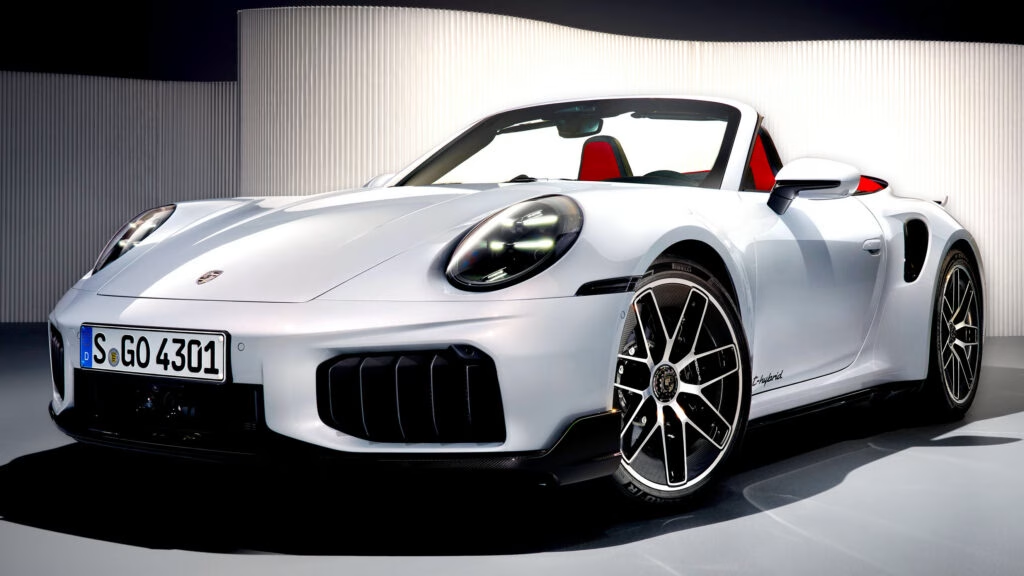How does the 2026 Porsche 911 Turbo S Hybrid change the game for performance cars?
Porsche has never been shy about pushing boundaries, but the 2026 911 Turbo S Hybrid is a leap that even die-hard fans might not have seen coming. With 701 horsepower on tap, this is the most powerful 911 Turbo S ever, and—here’s the kicker—it’s the first hybrid in the Turbo S lineup. If you’re picturing a compromise, think again. Porsche’s engineers have managed to blend electrification with classic flat-six thrills, creating a car that’s both blisteringly fast and surprisingly refined.
What’s under the hood, and how does the hybrid system work?
At the heart of the new Turbo S is a 3.6-liter twin-turbo flat-six, but the real story is the hybrid tech. Unlike the GTS, which uses a single electric turbo, the Turbo S gets two eTurbos and an electric motor tucked inside the eight-speed dual-clutch gearbox. This setup delivers 701 hp and 590 lb-ft of torque from just 2,300 rpm, making for instant throttle response and relentless acceleration. The 1.9 kWh battery may sound modest, but it’s all about short bursts of power and keeping weight in check.
Need proof it works? The new Turbo S rockets from 0 to 60 mph in just 2.4 seconds, and hits 124 mph in 8.4 seconds—both a tick quicker than the outgoing model. Top speed is 200 mph, which is slightly down from before, but in the real world, you’ll never notice. The car’s all-wheel-drive system, Porsche Traction Management, ensures all that power gets to the ground with zero drama.
How does the hybrid system affect weight and handling?
Adding batteries and electric motors usually means extra pounds, and the Turbo S does tip the scales at 3,829 lbs—about 180 lbs heavier than its predecessor. But here’s the surprise: you don’t feel it. Jorg Bergmeister, Porsche’s own test driver and brand ambassador, said the new car is actually more agile and grippy than before. That’s thanks to a suite of chassis upgrades, including electro-hydraulic Porsche Dynamic Chassis Control, which reacts faster than older hydraulic systems and keeps body roll in check.
The result? Pure magic. During final testing, a lightly camouflaged prototype lapped the Nürburgring Nordschleife in 7:03.92—a jaw-dropping 14 seconds faster than the previous Turbo S. That’s the kind of improvement you usually only see after a full generational leap, not just a powertrain tweak.
What other engineering upgrades set this Turbo S apart?
Porsche didn’t stop at the powertrain. The 2026 Turbo S comes standard with massive ceramic brakes (420 mm front, 410 mm rear), sticky 20-inch front and 21-inch rear tires, and a host of active aerodynamic features. Up front, vertical cooling flaps and an active diffuser manage airflow and cooling, while the rear gets an extendable wing that adjusts for drag or downforce as needed. Even the exhaust is special—titanium muffler and tips save weight and give the flat-six a sharper bark.
Inside, what makes the new Turbo S feel special?
Step inside and you’ll find the familiar 992.2 layout, but with plenty of unique touches. Turbonite accents on the steering wheel, dashboard, and seat belts set the tone, while carbon fiber and Neodyme details add a sense of occasion. The coupe can be had as a two-seater with 18-way adjustable sport seats, or you can opt for rear seats at no extra cost. The cabriolet sticks with a 2+2 layout. And if you want to make your Turbo S truly yours, Porsche’s Paint to Sample program and Exclusive Manufaktur division are ready to oblige. There’s even a COSC-certified chronograph available, so you can literally wear your car on your wrist.
How much does it cost, and what should buyers know about pricing?
Here’s where things get real. The 2026 Turbo S starts at $270,300 for the coupe and $284,300 for the cabriolet in the US, before delivery and fees. That’s a hefty jump—over $30,000 more than the outgoing model. Porsche points out that these prices could change depending on future tariffs or economic policy shifts, so if you’re in the market, keep an eye on the headlines.
Is the hybrid 911 Turbo S still a true Porsche?
For purists, the idea of a hybrid 911 Turbo S might sound like heresy. But after seeing what Porsche has achieved—more power, sharper handling, and a Nürburgring time that leaves rivals in the dust—it’s clear the brand hasn’t lost its way. If anything, the hybrid system makes the car more responsive and versatile, not less. The new Turbo S is still practical enough for daily use, but with a level of performance that puts it firmly in supercar territory.
The big takeaway? The 2026 Porsche 911 Turbo S Hybrid isn’t about perfection—it’s about smarter adjustments. Start with one change this week, and you’ll likely spot the difference by month’s end.

